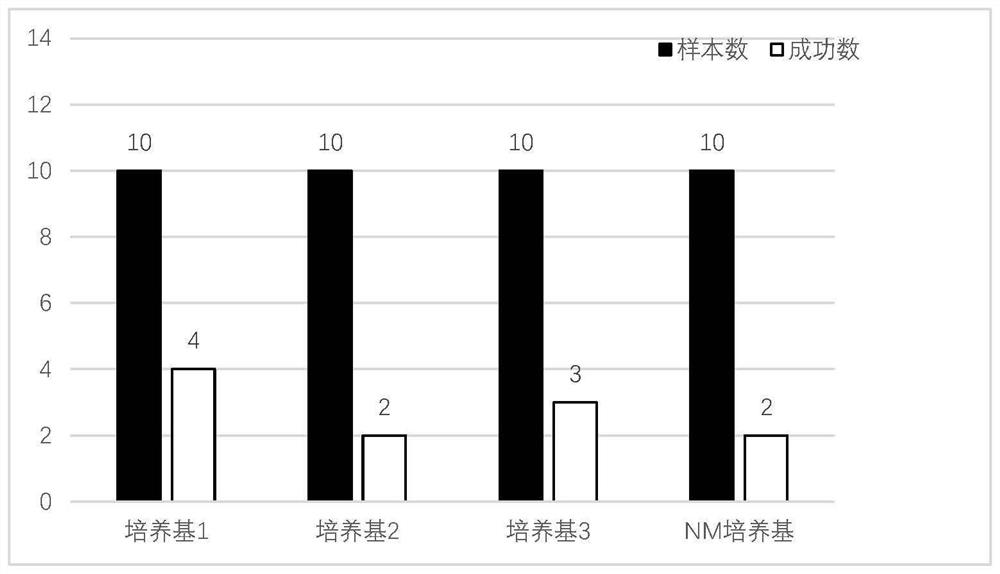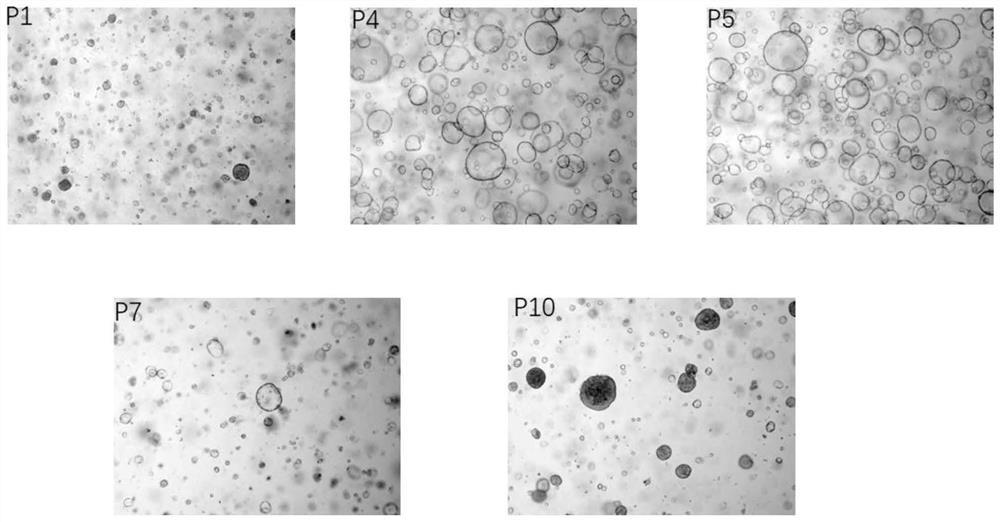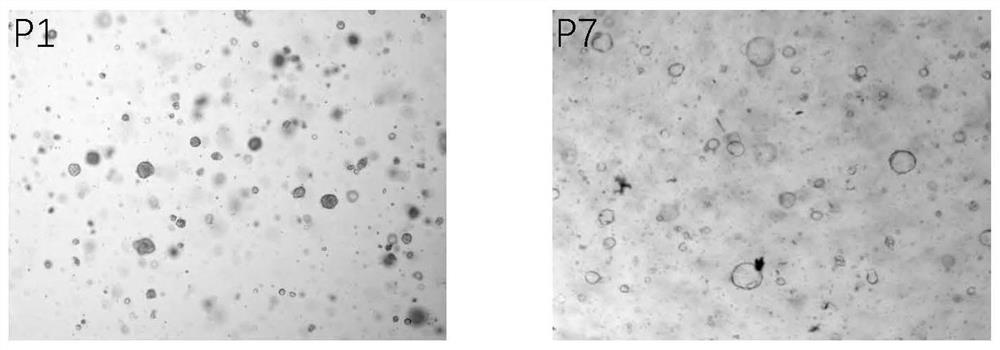Continuous culture method and culture medium for primary hepatocellular carcinoma organoids
A technology for culture medium and hepatocytes, which can be used in cell culture active agents, hepatocytes, detection of programmed cell death, etc., can solve the problems of low culture success rate, low success rate, and difficulty in culture
- Summary
- Abstract
- Description
- Claims
- Application Information
AI Technical Summary
Problems solved by technology
Method used
Image
Examples
Embodiment 1
[0043] Embodiment 1, improved culture medium 1
[0044] DMEM / F12 medium, ascorbic acid (10mg / L), L-glutathione (1-50mg / L), Insulin (20mg / L), Sodium selenite (0.05mg / L), R-spondin 1 (500ng / ml), N2(1X), B27(1X), GlutaMAXSupplement(1X), HEPES(1X), Niacinamide(20mM), Normocin TM (1X), N-Acetylcysteine (2mM), A83-01 (10μM), Gastrin I (10nM), EGF (20ng / ml), HGF (50ng / ml), FGF7 (20ng / ml) , FGF10 (200 ng / ml), Y27632 (50 μM).
Embodiment 2
[0045] Embodiment 2, improved culture medium 2.
[0046] DMEM / F12 medium, ascorbic acid (10mg / L), Holo-Transferrin (50mg / L), L-glutathione (20mg / L), ethanolamine hydrochloride (30mg / L), R-spondin 1:( 200ng / ml), N2(1X), B27(2X), GlutaMAXSupplement(1X), HEPES(1X), Nicotinamide(5mM), Normocin TM (1X), N-Acetylcysteine (2mM), A83-01 (5μM), Gastrin I (10nM), EGF (50ng / ml), FGF7 (100ng / ml), FGF10 (100ng / ml) , DMSO (1%), Y27632 (50 μM).
Embodiment 3
[0047] Embodiment 3, improved culture medium 3
[0048] DMEM / F12 medium, Holo-Transferrin (10mg / L), L-glutathione (1-10mg / L), Insulin (10mg / L), R-spondin 1: (100ng / ml), N2 (0.5 X): B27(1X), GlutaMAX Supplement(1X), HEPES(1X), Nicotinamide(10mM), Normocin TM (1X), N-acetylcysteine (1.25 mM), A83-01 (0.5 μM), gastrin I (1 nM), EGF (100 ng / ml), Y27632 (50 μM), CHIR99021 (50 μM).
PUM
| Property | Measurement | Unit |
|---|---|---|
| concentration | aaaaa | aaaaa |
| concentration | aaaaa | aaaaa |
Abstract
Description
Claims
Application Information
 Login to View More
Login to View More - R&D
- Intellectual Property
- Life Sciences
- Materials
- Tech Scout
- Unparalleled Data Quality
- Higher Quality Content
- 60% Fewer Hallucinations
Browse by: Latest US Patents, China's latest patents, Technical Efficacy Thesaurus, Application Domain, Technology Topic, Popular Technical Reports.
© 2025 PatSnap. All rights reserved.Legal|Privacy policy|Modern Slavery Act Transparency Statement|Sitemap|About US| Contact US: help@patsnap.com



